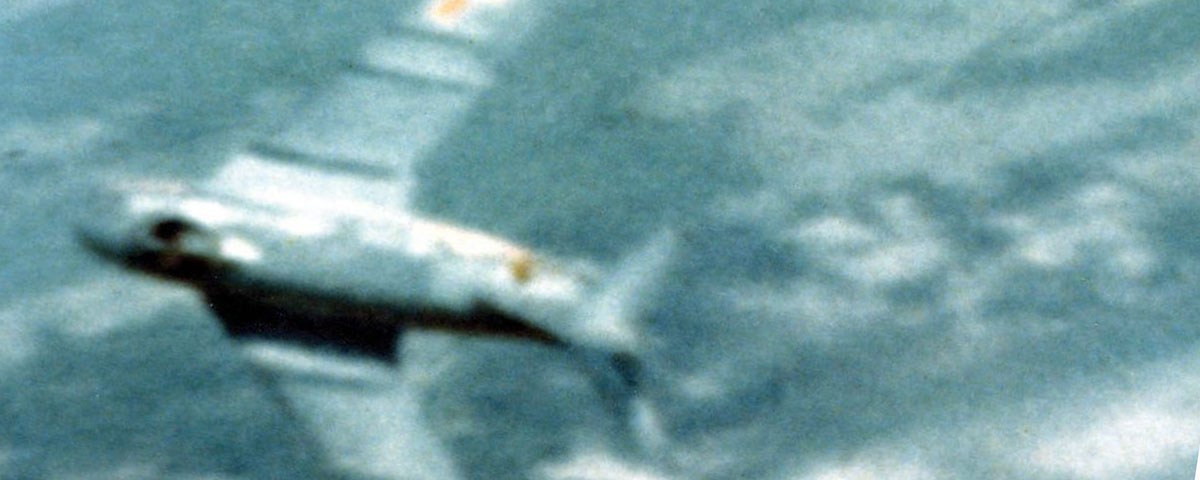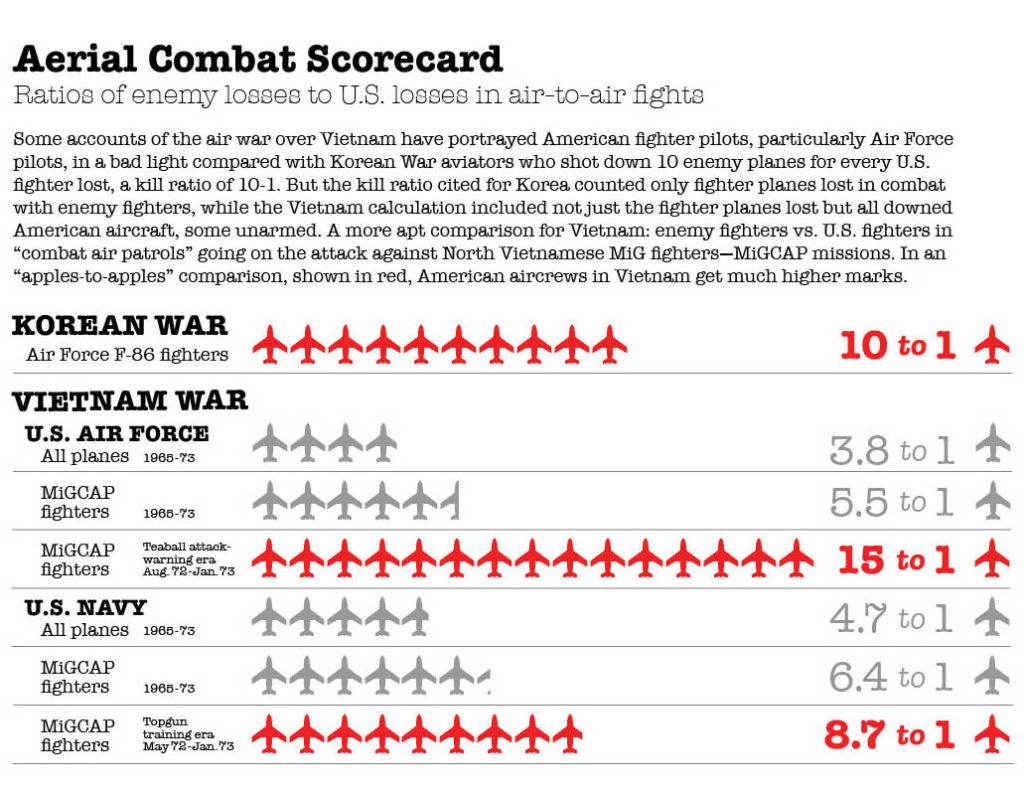In the early years of the Vietnam War, the performance of American fighter pilots in dogfights appeared to lag far behind their counterparts in the Korean War. In Korea, F-86 Sabre pilots swept the skies and ran up amazing kill ratios, ending the war with about 10 victories for every F-86 lost. In contrast, kill ratios in the first half of the Vietnam War barely exceeded a humiliating 2-1.
It seemed that American fighter pilots had lost all knowledge of air-to-air combat in the decade between the Korean and Vietnam wars, according to the conventional wisdom. The U.S. Navy, however, was able to rack up better scores after creating the Topgun Fighter Weapons School in March 1969, the theory goes, while the U.S. Air Force eschewed that route and was thoroughly shamed by wily North Vietnamese pilots.
That is the view put forward in blockbuster movies such as Tom Cruise’s 1986 Top Gun, History Channel TV programs, and countless books, but is it an accurate account of what happened? The answer is no, not even close.
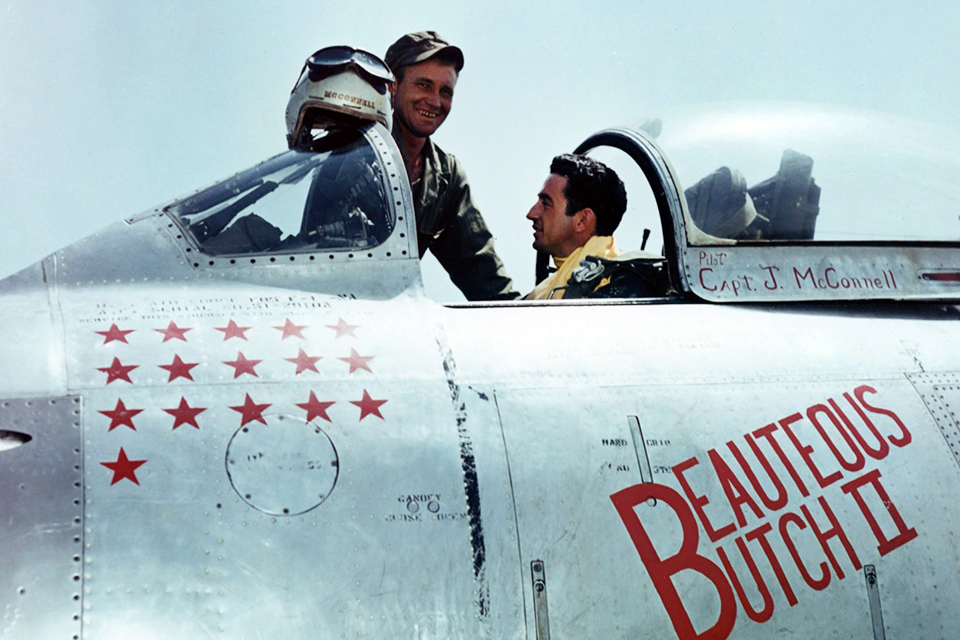
The contrast between the Korean War’s kill ratios and those of Vietnam are unfair comparisons for a number of reasons.
First and foremost, the Korean War kill ratio was drawn from nearly 900 decisive combats (those resulting in an aircraft loss), a large number that seemed to provide statistical validity to conclusions drawn from that data. The Vietnam kill ratios are compiled from a much smaller data set, which puts conclusions about kill ratios on tenuous ground, especially for the Navy’s air combat.
There were a total a 269 American and enemy aircraft shot down in air-to-air combat over Vietnam during the entire war—201 in fights between the U.S. Air Force and North Vietnamese air force and just 68 in the U.S. Navy’s air battles with the North Vietnamese. In those fights, the U.S. Air Force lost 64 aircraft and the Navy lost 12.
Second, because of the different methods used to calculate kill ratios in the two wars, any attempt to place those ratios side by side is an invalid “apples to oranges” comparison. The Vietnam War kill ratios were calculated using the total number of U.S. aircraft lost in air-to-air combat, regardless of whether or not they were fighter planes. That meant the count of downed aircraft includes the unarmed RF-101, a reconnaissance jet; the A-1E Skyraider, a piston-engine plane; the EB-66, a bomber converted into a recon plane; the RC-47, a cargo plane converted into recon plane; and that “terror of the skies,” the HH-53 rescue helicopter. The North Vietnamese air force even gave full victory credits to pilots who shot down unarmed American reconnaissance drones.
In contrast, the Korean War kill ratio considers only the victories of our best fighter, the F-86, whose pilots were almost exclusively flying aggressive, offensive airsuperiority missions. The Vietnam War equivalent is the MiGCAP mission—“MiG combat air patrols” of F-4 Phantom II fighters, which protected bomb carriers from MiG attacks during strikes on targets in North Vietnam. A fair comparison with Korea would be limited to the Vietnam War’s MiGCAP missions.
Geography of the Battlespace
Any comparison between Air Force and Navy kill ratios should consider each service’s flight routes, because geography had a significant impact on tactics and outcomes.
Unlike Navy aircraft launched from carriers in the Gulf of Tonkin, the great majority of Air Force aircraft on bombing runs took off from bases in Thailand and approached their targets in North Vietnam from the landward side. Enemy radar picked them up while they were still in Thai airspace, and MiGs could maneuver into advantageous positions up to 100 miles from Hanoi.
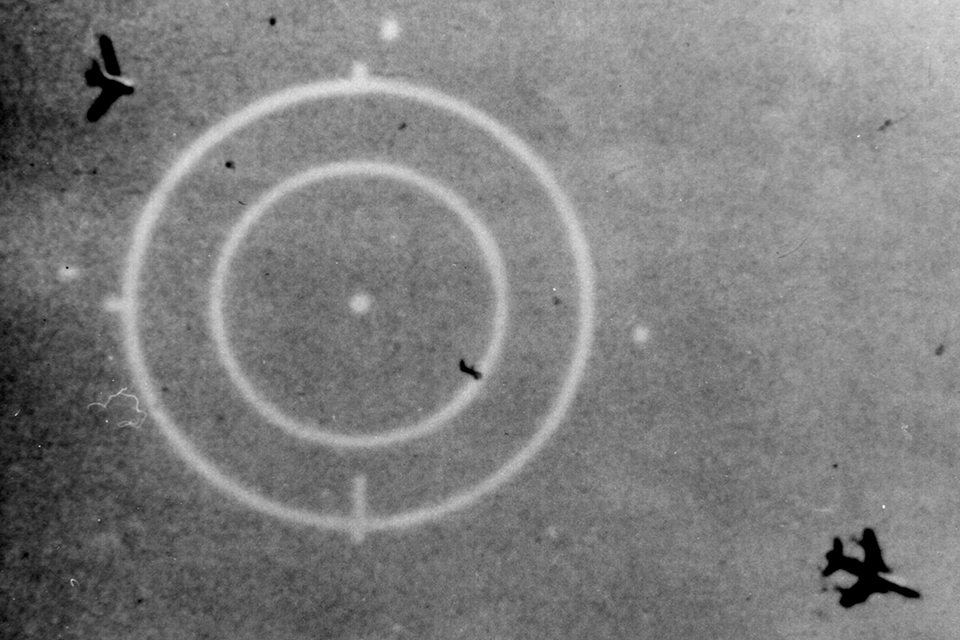
While the North Vietnamese air force had excellent ground-controlled intercept radar to direct its planes, U.S. Air Force radar coverage ranged from spotty to nonexistent over assigned strike routes. Aircrews operated with little more than their eyes to guide them. Fighters escorting the bomb-carrying aircraft never knew where the threat would come from and therefore normally stayed close to the planes they were protecting so they wouldn’t be caught out of position during an attack. As a result, U.S. Air Force aircraft usually entered engagements from a defensive and reactive posture.
On the other hand, the Navy used its carrier-based operations to maximum advantage. North Vietnamese fighters had less warning time to react to the U.S. strikes and far less opportunity to maneuver behind Navy fighters, whose backs were protected by ships in the Gulf of Tonkin. Additionally, naval air operations over North Vietnam were completely covered by radar-equipped ships operating in the Gulf under the code name “Red Crown.” Navy pilots were mainly assigned targets in coastal areas where they had good radar warning and control from ships patrolling just offshore.
Navy fighters were therefore able to take a more aggressive posture than their Air Force counterparts, flying offensively oriented combat sorties instead of defensive close-escort missions. After-action reports found that 65 percent of Air Force losses were suffered by aircraft fighting from a defensive posture, which required a fighter under attack to reverse positions to get a kill, a very difficult maneuver to make. In contrast, only 20 percent of Navy and Marine Corps losses were aircraft in a defensive posture.
The air war over North Vietnam can be divided into six distinct periods over the two major bombing campaigns, Operations Rolling Thunder (March 1965-November 1968) and Linebacker I and II (May 1972-January 1973): the buildup of the North Vietnamese air force (1964-1966); going head to head (January-July 1967); ambush tactics (August 1967-October 1968); going head to head again (January-May 1972); back to ambush tactics (June-July 1972); and the Teaball era (August 1972 until American operations in Vietnam ceased in January 1973).
The North Vietnamese Buildup
During this period, the North Vietnamese air force was building an extensive ground radar network while its pilots slowly acquired experience with their new MiG-17s. Acting cautiously, Hanoi refused to commit its fighters to combat unless the odds were stacked in their favor. Only 28 North Vietnamese planes were lost in combat with U.S. aircraft during the 1964-66 period.
The U.S. Air Force’s first kills of the war occurred on July 7, 1965, when two MiG-17s attacked a pair of F-4C Phantom II fighter-bombers, which used their superior speed and rate of climb to reverse position on the MiGs, a tactic incorporated into the Navy’s Topgun program four years later.
At the end of this period, the North Vietnamese began flying the improved MiG-21, setting up the next phase of the air war.
Going Head to Head
By early 1967, North Vietnamese pilots felt confident they could go head-to-head with U.S. airmen in a straight-up fight. They were gravely mistaken.
The year started with Operation Bolo, where Col. Robin Olds’ 8th Tactical Fighter Wing, equipped with F-4 Phantoms, set up an ambush by imitating the routes, call signs and even radar-jamming pods that F-105D Thunderchiefs used on their way to bomb targets in North Vietnam. When the North Vietnamese MiG-21s came up to intercept the “Thunderchiefs,” they were surprised to meet Phantoms equipped with missiles for air-to-air combat, instead of the bomb-laden F-105Ds they were expecting. In that engagement, on Jan. 2, Olds’ crews claimed seven MiG-21 kills without a loss.
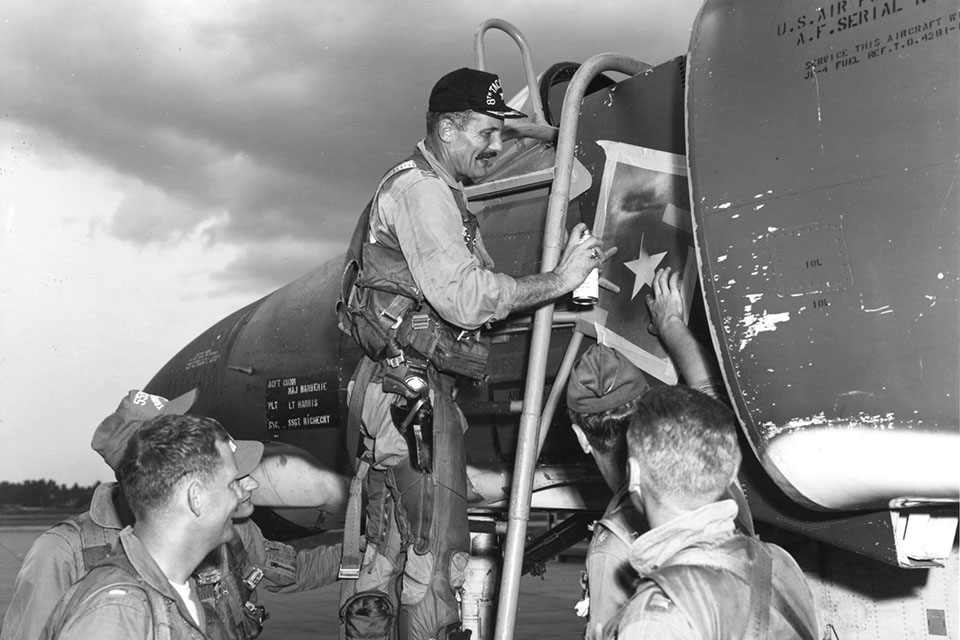
After licking their wounds, North Vietnamese pilots again began challenging American aviators in late April, but as the fighting intensified in May, it became apparent that they would not succeed. Between January and July, U.S. Air Force fighters flying air-to-air missions shot down 29 MiGs while losing just two of their own—a 14.5-1 kill ratio. It is little wonder that Air Force brass failed to see a problem in the training program for their fighter force.
With its air supremacy fully established, the U.S. Air Force implemented an economy of force measure, using Phantoms that could be deployed for both bomb strikes and combat air patrols. These STRIKE/CAP aircraft were sent primarily on missions to drop bombs but could jettison their air-to-ground ordnance and become air-to-air fighters if necessary. While that approach made sense at the time, it proved to be a major mistake.
Ambush Tactics
The North Vietnamese air force, having lost half of its combat planes in a matter of a few weeks between March and June of 1967, went into a period of self-examination, training and reconstitution. Because the North Vietnamese could not possibly gain control of the skies by directly challenging American aviators, they adopted a different tactic that created headaches for the U.S. Air Force until the end of the war.
On Aug. 23, 1967, North Vietnamese ground radar guided a MiG-21 to a position astern of four bomb-laden F-4 Phantoms in close formation to maximize their radar-jamming measures against surface-to-air missiles, called SAMs. The MiG made a supersonic “hit-and-run” pass, launched a Soviet AA-2/Atoll air-to-air missile that shot down Phantom No. 4 and blew past the formation to safety.
That incident was grim news to U.S. Air Force tacticians. “The high differential in airspeed between the attacking MiGs and the STRIKE/CAP F-4s made it virtually impossible for the F-4s to accelerate fast enough to offer any serious threat to the MiG-21s,” stated the Air Force’s “Red Baron” study, which was written immediately after the war and examined air combat performance in Southeast Asia. “Because the MiG-21s engaged only when directed by radar—which provided them with both surprise and positional advantage—there was no opportunity for the friendly forces to achieve a lethal firing position on the attacking MiGs. As long as the MiG-21s maintained the high-speed, one-pass tactic and refused all other engagements, the STRIKE/CAP flights could afford no real protection.”
The Air Force initially reinstituted its tactic of sending dedicated escort fighters to accompany the bomb carriers, but this also proved ineffective. “To be effective against the hit-and-run tactics of the MiG-21s, MIGCAP flights had to depart the strike force and intercept the attacking MiG-21s before they were able to initiate their high-speed runs,” according to the Red Baron report. Yet, with no effective radar support to properly position the combat planes between the MiGs and bomb carriers that tactic was fraught with risk.
Facing both the SAM threat and supersonic MiGs, the Air Force began building larger groups of aircraft for bombing missions. “Strike packages” contained 40 or more aircraft, including bomb carriers, “Wild Weasels” (two-seater F-105F and G Thunderchiefs outfitted with equipment to detect and destroy SAM sites), reconnaissance and radar-jamming aircraft, F-4 Phantom fighter escorts close to the bomb carriers and the MiGCAP F-4s, which were free to make sweeps away from the pack and aggressively go after MiGs.
The new formations provided relatively good protection for the bomb carriers at the heart of the formation but left aircraft on the periphery vulnerable. As more U.S. aircraft were downed and kill ratios worsened, frustration among Air Force crews grew.
During the final months of Operation Rolling Thunder in late-1968, the enemy shot down 22 Air Force aircraft at a cost of 20 MiGs. In every case, the MiGs’ victories were initiated from astern of an unaware target. This was a dismal turn of events, with the U.S. Air Force’s overall kill ratio dropping from 4.1-1 to 2.3-1.
The only bright spot in that period was that MiGCAP aircraft maintained a respectable 3.5-1 kill ratio, despite the North Vietnamese air force’s advantages. However, if the American Air Force could not solve the problem of surprise attacks, the success of future operations would be at risk.
Going Head to Head, Again
When U.S. forces resumed widespread operations over North Vietnam in spring 1972, the North Vietnamese decided once again to challenge the American strikes head-on. Between February and early March, the U.S. Air Force ran up eight kills without loss.
Then on May 10, the Air Force traded the North Vietnamese three for two during the first major battle of Operation Linebacker. The Navy, with several graduates of the new Topgun course in the air, countered the bulk of the North Vietnamese action that day and famously shot down seven MiG-17s and a MiG-21 with no losses. It was the worst single day of the war for the North Vietnamese air force, on par with the shock of Operation Bolo more than five years earlier.
Hanoi’s reaction was swift, radical and appropriate. The MiG-17s, now proved obsolete, were largely withdrawn from combat. They would be involved in only seven more decisive battles for the rest of the war. The North Vietnamese air force reverted to its successful supersonic ambush tactics with the MiG-21.
Those tactics were extremely difficult to deploy against carrier-based aircraft, however, and consequently the Navy’s role in air-to-air combat over North Vietnam diminished considerably.
The Navy tallied just 11 victories and three losses for the balance of the war. (The Navy had only 22 decisive battles with MiG-21s over the course of the entire war.) After May 10, the air-to-air war effectively became an Air Force show.
Back to Ambush Tactics
North Vietnam’s change in tactics worked. For a brief moment in June 1972, MiG-21s gained ascendancy, shooting down five Air Force Phantoms on air-to-air missions for a loss of only two. Four out of the five losses were the result of supersonic MiG-21s attacking unaware targets from behind, while one of the U.S. victories was made in a reversal over an attacking MiG. The losses were troubling enough to cause the Air Force to re-evaluate its tactics.
July proved only marginally better, with Air Force fighters trading six victories for five losses. The MiGCAP force, with its focus on offensive operations, showed its advantages, however, getting four of those six victories with no losses. Once more, all five American losses came from supersonic stern attacks on aircraft unaware they were in the enemy’s sights. But things were about to turn around.
The Teaball Era
In August 1972, the Air Force finally got its technical answer to the attack warning problem: a control center called Teaball. The center, at Nakhon Phanom Royal Thai Air Base, fused information from available intelligence sources and provided MiG warnings in real time over a complicated set of radio networks. Air Force crews got the situational awareness they had been lacking—and Navy crews had enjoyed—since the beginning of the war. Teaball essentially solved the ambush problem.
Only six Air Force planes of all types were lost to MiGs after Teaball went on the air, at least half of which were shot down during a Teaball communications interruption. During that same period, the Air Force shot down 26 MiGs—23 of them during air-to-air missions with a loss of three American planes (aircrews on other missions, such as gunners on B-52 bombers, got the other MiG shootdowns).
The Air Force’s 26 MiG kills between August 1972 and the withdrawal of all U.S. forces in January 1973 are slightly more than the number of victories the Navy achieved in all of 1972 (25 kills) and nearly half as many as the Navy record over the entire war (56 kills). The Air Force had a Vietnam War total of 137 kills.
Air Force planes of all types on air-to-air missions had an overall 3.8-1 kill ratio for the entire war. In an apples-to-apples comparison with the F-86s in Korea, the Air Forces’ MiGCAP F-4s in Vietnam had 5.5-1 kill ratio, with a very strong upward trend toward 15-1 during the the final five months of the war, greatly exceeding the Korean War results of 10-1.
The Navy’s kill ratios—involving a much smaller number of engagements—were 4.7-1 for aircraft of all types during the entire war, 6.4-1 for MiGCAP missions during the entire war and 8.7-1 for MiGCAPs in the Topgun era.
Freed up by Teaball to be more aggressive without fear of ambush, the MiGCAP force did spectacularly well, shooting down 15 and losing only one. In short, when the Air Force was afforded conditions similar to those that helped the Navy, the results of the two services were very similar.
The War’s Air Power Legacy
Postwar analysis showed that 81 percent of all U.S. aircraft lost in combat were either unaware of an attack or became aware too late to defend themselves. The primary reason for the unsatisfactory kill ratios was clear: Excellent North Vietnamese tactics exploited the Air Force’s lack of radar warning. While more and better training is always desirable, it is difficult to understand how it would have overcome that disadvantage.
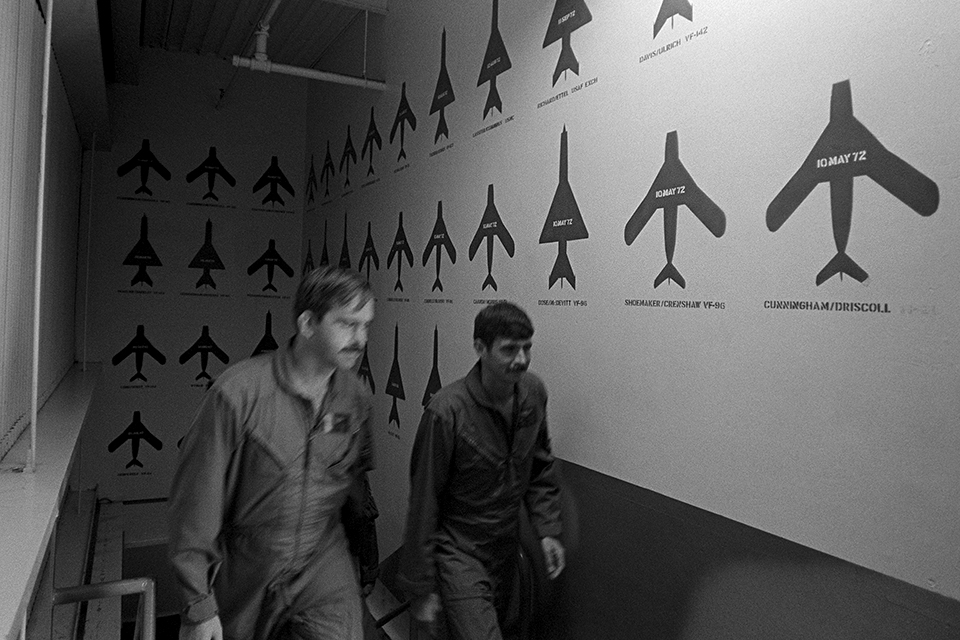
Four years after the air war over North Vietnam ended, the Air Force got its true solution to the problem of surprise: the E-3 Sentry with Airborne Warning and Control System radar, called AWACS, which can collect information on the position of enemy aircraft and relay it directly to the fighters. Since then, only one U.S. aircraft has been lost in air-to-air combat—Lt. Cmdr. Scott Speicher’s F-18 Hornet, shot down on Jan. 17, 1991, by an Iraqi MiG-25 on the first night of Operation Desert Storm.
Today, the F-35 Lightning II carries an onboard sensor suite with the potential to give its pilot situational awareness without off-board assistance like the AWACS provides. The Lightning II integrates the information it has gathered and shares it with other aircraft, compiling a “god’s-eye view” of the battle space that all but eliminates the danger of being caught unaware by an enemy fighter.
How different would the war over Vietnam have looked if the U.S. had fielded aircraft that not only were almost impossible to surprise but also could stealthily turn the tables on the enemy attackers? Surely the North Vietnamese would have opted for force preservation and withheld their fighters from combat, just as America’s enemies learned to do three decades later.
William A. Sayers received an Air Force commission after graduating from Texas Tech in 1981. He has master’s degrees in military studies and strategic studies from Marine Corps University. He spent 28 years as a military analyst at the Defense Intelligence Agency, National Counterterrorism Center and CIA.
This feature originally appeared in the June 2018 issue of Vietnam Magazine. Subscribe today!

